While the rest of the world has moved on to crossovers and SUVs, the sedan market is still a hot segment in the Philippines. And of course, one good way of confirming this is just looking at local roads, where you’ll see that sedans remain as the most common vehicle type.
2020 Honda Civic Turbo RS Review: On Fire | Philkotse Philippines
One of the popular sedans in the local market is, of course, the Honda Civic. It has remained to be a mainstay model for Honda Cars Philippines, and many are undoubtedly looking at it as their next sensible but sporty daily drive.
But how does the Honda Civic fare against its rivals namely the Toyota Corolla Altis, the Mazda3, and the Hyundai Elantra? To find out, let's compare the Civic with these three in terms of specs.
Honda Civic: Summary of specs
Just like its rivals, the Honda Civic is a front-engine, front-wheel-drive, five-seater sedan. For the Philippine market, it is currently in its 10th-generation, and it has three available variants.
In terms of size, the Civic is 4,649mm long, 1,799mm wide, and 1,416mm in height. It also has a wheelbase length of 2,698mm, and a ground clearance of 133mm.
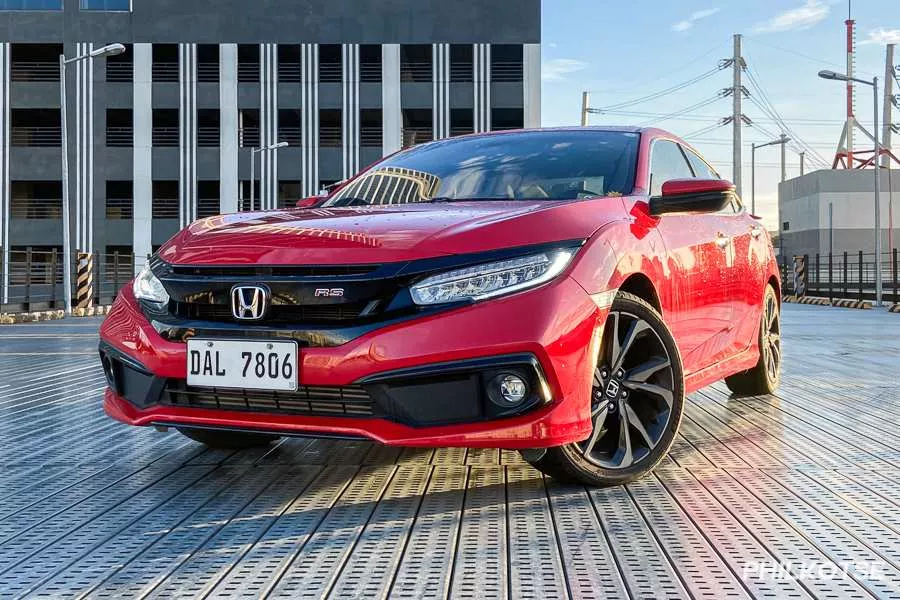
The Honda Civic RS Turbo
Depending on the variant, the Philippine-spec either uses a 1.5-liter turbocharged inline-4, or a 1.8-liter naturally aspirated inline-4. Both engine options are gasoline, and both are paired with a continuously variable transmission (CVT). Of note, the top-spec Civic RS Turbo which uses the 1.5-liter engine, does come with paddle shifters.
At most, the 1.8-liter Civic engine can produce up to 139 horsepower and 174 Nm of torque. The 1.5-liter turbo meanwhile, makes more at 171 horsepower and 220 Nm of torque.
Inside, the Civic can comfortably seat up to five including its driver. The top-spec and mid-spec variants both feature an automatic air-conditioning system, a seven-inch touchscreen with Apple CarPlay and Android Auto, and a push to start button. The top-spec Civic RS does have leather seats, an electronically adjustable driver’s seat, a six-piece speaker system, among others.
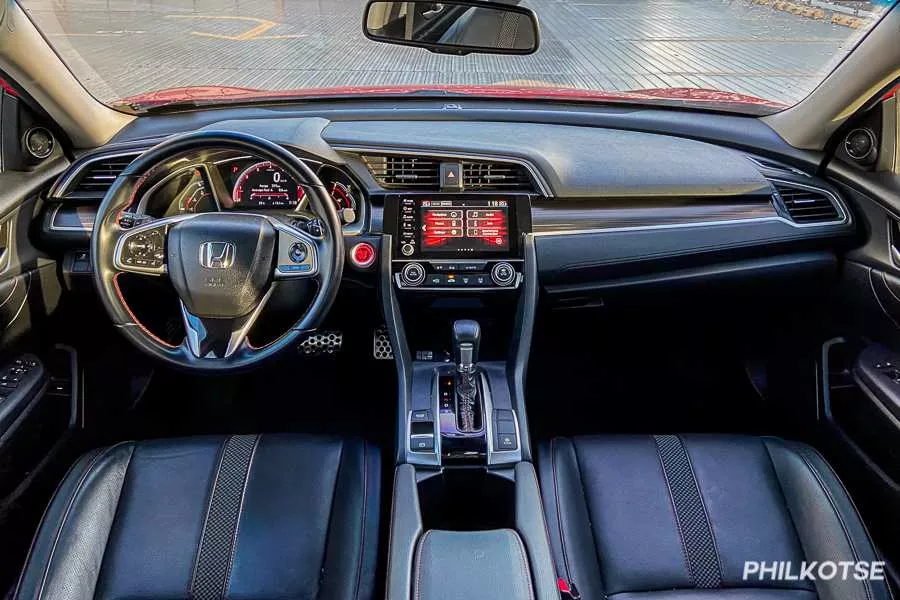
Inside the top-spec Civic
For safety, all Civic variants come standard with anti-lock braking, speed-sensing door locks, an engine immobilizer, stability control, cruise control, and hill-start assist. The top-spec versions however, also have seven airbags, while the rest have two. Besides that, the aforementioned top-spec variant is also kitted out with rain-sensing wipers, and automatic headlamps.
Price-wise, the Civic in the Philippine market ranges from Php 1,115,000 to Php 1,615,000.
Honda Civic vs Toyota Corolla Altis
Like the Honda sedan, the Toyota Corolla Altis is also a five-seater, front-wheel-drive sedan.
Size-wise, the Toyota model is slightly more compact. It has a length of 4,630mm, and a width of 1,780mm. It is, however, significantly taller than the Civic, with its height of 1,435mm. The tops-spec Corolla Altis V variant is even more so, with its height of 1,455mm.
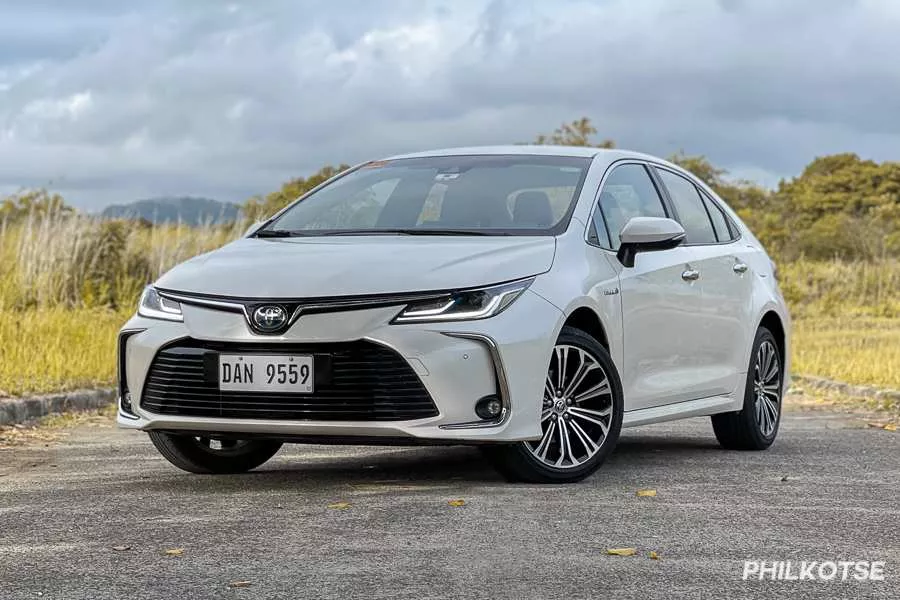
The Toyota Corolla Altis Hybrid
When comparing the Honda Civic vs the Toyota Corolla Altis in terms of engine power, it is obvious that the Honda sedan has more to offer. To elaborate, the top-spec 1.8-liter Hybrid version of the Corolla Altis can produce up to 121 horsepower and 142 Nm of torque, which is of course less than what the Civic RS turbo can make. On top of that, the Civic’s 1.8-liter naturally aspirated engine is also more powerful than the Corolla Altis’ 1.6-liter engine, which can produce up to 121 horsepower and 154 Nm of torque. Of note, the said 1.6-liter mill is only available for the Corolla Altis G and E.
Moving over to transmissions, most variants of the Toyota-made sedan also use a CVT. Then again, it is one of the few models in the segment that offers a manual gearbox. This comes in the form of the Corolla Altis 1.6 E variant, which uses a six-speed manual transmission.
As for its interior, it can also fit up to five people. Its three higher variants come with automatic climate control, but like the entry-level Civic S, the Corolla Altis E also gets a manual AC.
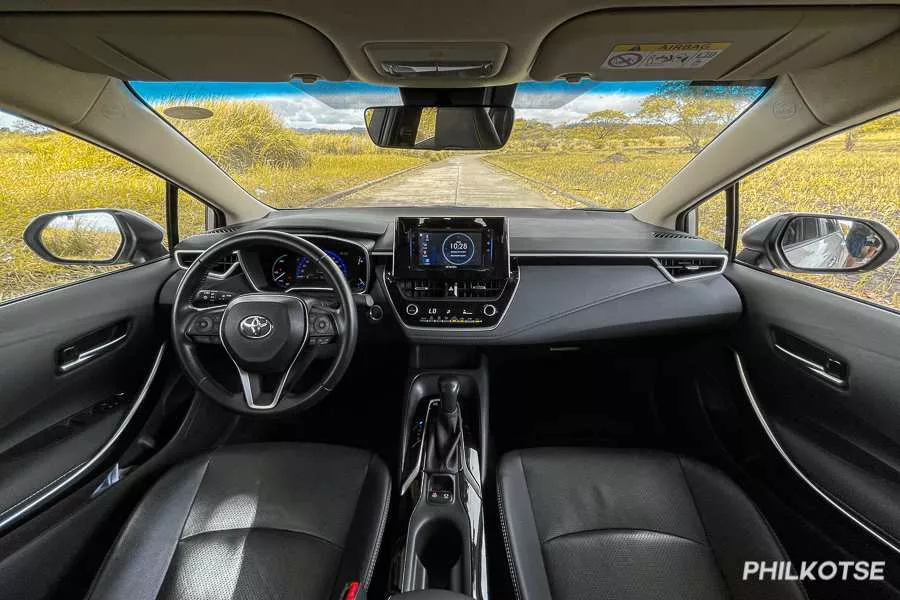
The top-spec Corolla Altis' cockpit
Regarding on-board entertainment, the Toyota sedan either comes with an eight-inch touchscreen or a 6.8-inch touchscreen. Only the larger screen has Apple CarPlay and Android Auto, but the smaller unit does have Bluetooth and Toyota’s T-Link smartphone connectivity software. Both screens are linked to a six-piece speaker system.
For seating, the top two variants of the Corolla Altis get an eight-way power-adjustable driver’s seat. The rest meanwhile get manually adjustable seats. Also, the Corolla Altis V trims have leather seats, while the G and E have fabric.
Safety-wise, the Corolla Altis model comes standard with anti-lock braking, ISOFIX, hill-start assist, and stability control. As such, it is comparable to the Civic in that regard. Of note, the Toyota model also comes standard with seven airbags. The top-spec model also has several driver-assist features like a pre-collision alert system, lane departure alert and tracing assist, and dynamic radar cruise control. Moreover, the said variant also comes with rain-sensing wipers and automatic headlamps.
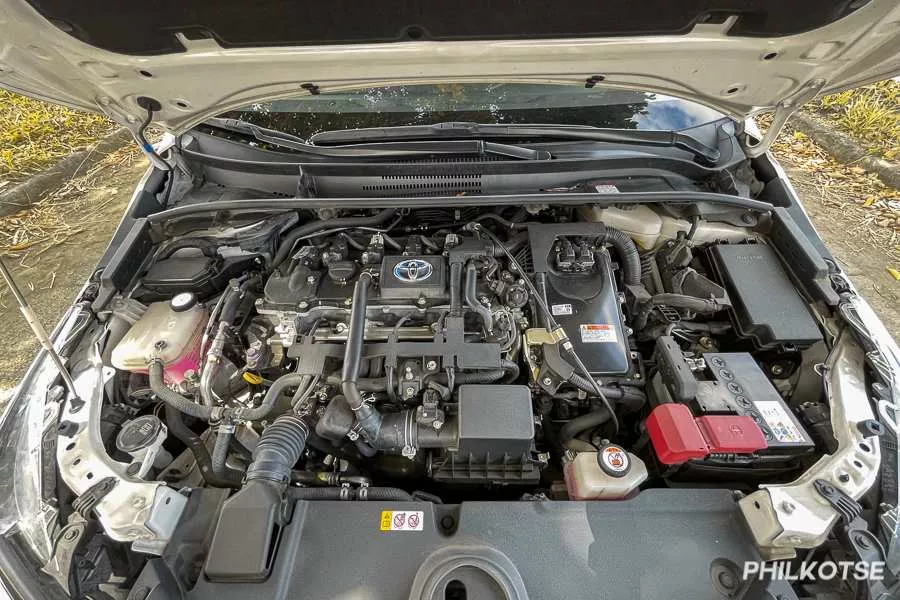
The Corolla Altis Hybrid's 1.8-liter inline-4 engine
On that note, the Civic’s onboard features are generally up-to-par with the Toyota’s. The Toyota-made sedan however, even the top-spec variant, has fewer onboard speakers than the Civic. It also has a more comprehensive safety kit than the Honda model. The Civic however, offers more power and torque in general.
Currently, the Corolla Altis has four variants in the local market. Their prices range from Php 1,014,000 to Php 1,610,000.
Honda Civic vs Mazda3
Another rival of the Honda Civic is the Mazda3. It is also a FWD vehicle, and it is also a four-door, five-seater sedan.
If we compare the Honda Civic vs the Mazda3 in terms of size, the latter is slightly longer but slightly narrower. That’s because it has a length of 4,660mm and a width of 1,795mm. It also has a height of 1,440mm, which means that it is also taller than the Honda model. In addition, the Mazda model also has a longer wheelbase at 2,725mm.
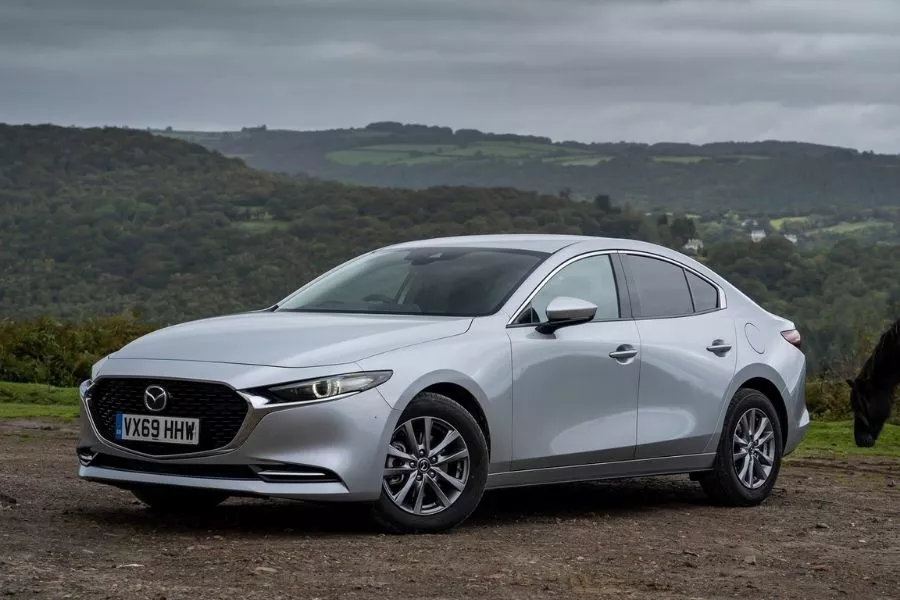
The Mazda3 sedan
When it comes to engines, the Mazda3 sedan has two options. For the entry-level Elite variant, it uses a 1.5-liter inline-4 engine that can churn out 110 horsepower and 146 Nm of torque. Suffice to say, this one makes less power than the Civic and the Corolla Altis.
The Mazda3 Premium variant is propelled by a 2.0-liter inline-4. At most, this mill can make 152 horsepower and 200 Nm of torque. It still isn’t as powerful as the Civic RS Turbo’s 1.5-liter, but it is zippy.
As for transmissions though, the Mazda3 veers away from CVTs, and instead uses a six-speed automatic transmission. Both the Mazda3 Elite and Premium also come with paddle shifters.
Inside, the Mazda3 sedan comes standard with automatic air-conditioning, a push-to-start button, and cruise control. The Elite also gets fabric seats, while the Premium gets leather seats with an electronically adjustable driver’s seat.
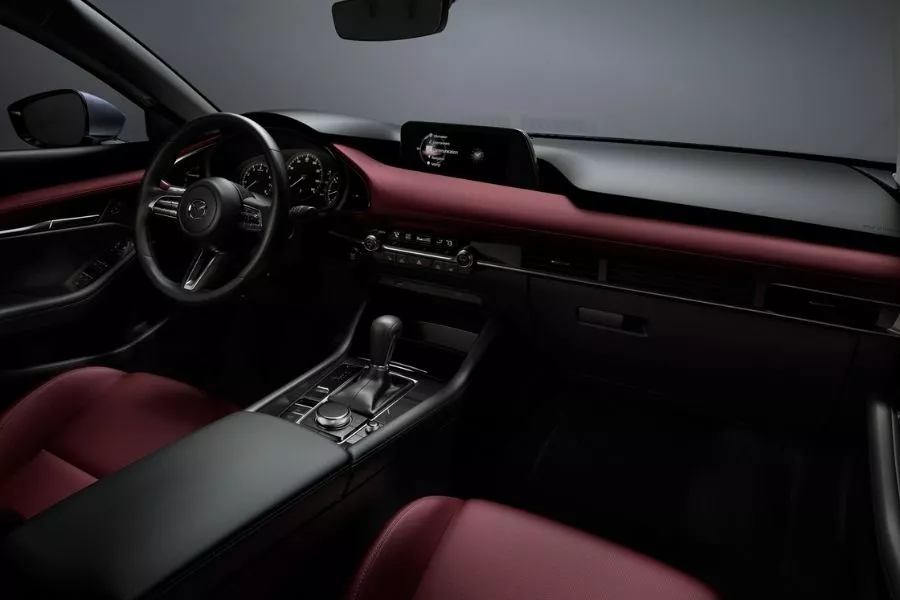
Check out the Mazda3's interior
Moving on to on-board entertainment, the Mazda3 gets an eight-inch touchscreen with both Apple CarPlay and Android Auto. Compared to its rivals, the Mazda3 Premium variant has the most speakers numbering at 12. Of note, these are also Bose speakers.
Regarding safety, the Mazda3 comes standard with anti-lock braking, ISOFIX child seat tethers, stability, and traction control. Both of its variants also have rain-sensing wipers, automatic headlamps, and seven airbags. On that note, the Mazda model has a broader safety kit than the Civic.
On top of that though, the top-spec Mazda3 Premium also has a number of driver-assist features. These include blind-spot monitoring with rear-cross traffic alert, lane departure warning, front-cross traffic alert, etc.
As of the moment, the Mazda3 sedan’s two variants come with a price of Php 1,295,000 for the Elite, and Php 1,495,000 for the Premium.
Honda Civic vs Hyundai Elantra
Hyundai’s entry into the Philippine compact sedan segment is the Hyundai Elantra. And yes, like the Civic, it is also a front-wheel-drive, four-door, five-seater model.
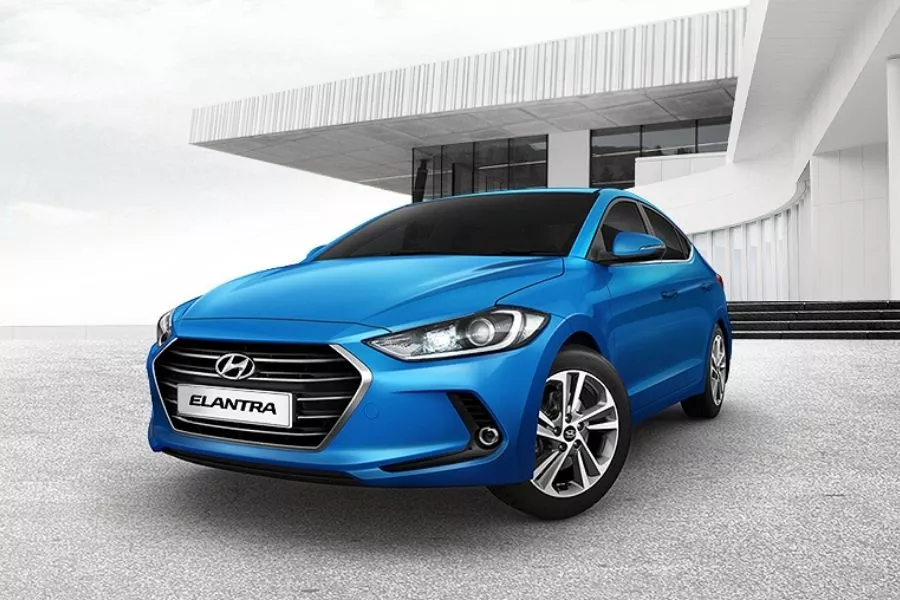
The Hyundai Elantra
When it comes to size, the Elantra is 4,570mm long, 1,800mm wide, and 1,450mm in height. It also has a wheelbase length of 2,700mm, and a ground clearance of 150mm. As such, it is shorter and taller than the Civic. Its wheelbase length is also marginal, but it definitely has more in the way of ground clearance.
The Elantra has one engine option. Both of its variants use a 1.6-liter inline-4 that’s capable of making 127 horsepower and 154 Nm of torque. Like the Corolla Altis, it has a manual variant that uses a six-speed manual gearbox. The automatic variant meanwhile, comes with a six-speed automatic. On that note, the Elantra makes less power and torque than both the turbo and non-turbo Civic variants.
When comparing the Honda Civic vs the Hyundai Elantra for on-board features, the latter keeps it on the simpler side. Both of its variants come standard with manual AC, turnkey ignition, fabric seats, and a 2-DIN audio system with a CD player.
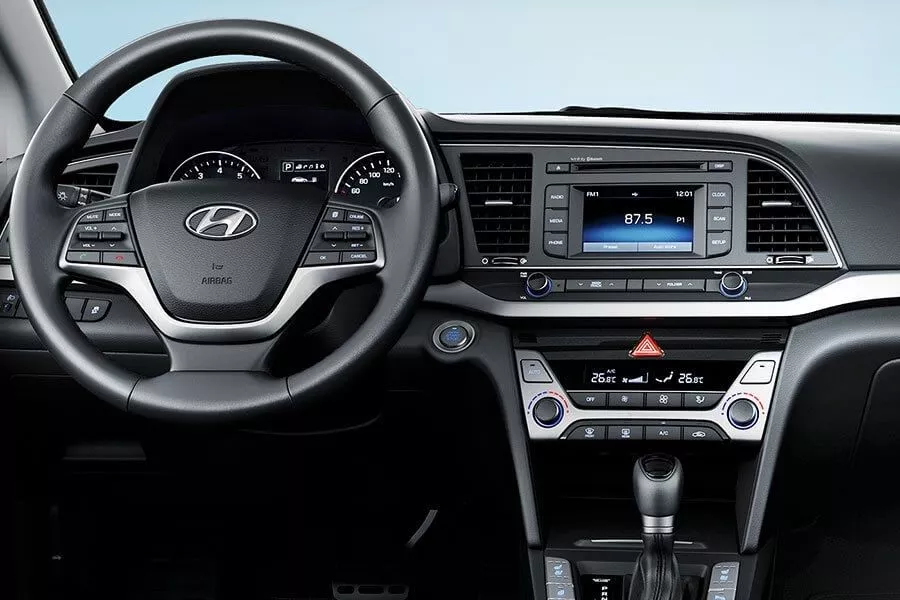
The Elantra's front cabin
The Hyundai model also has a basic safety kit compared to the Civic. It however, does come standard with anti-lock braking, and ISOFIX child seat tethers. While the Elantra GL AT has two airbags, the Elantra MT only has one.
The price range for the Hyundai Elantra sits at Php 970,000 to Php 1,065,000. It only has two variants for the local market.
For more car comparison articles, car buying and selling tips, and car maintenance tips, keep it here on Philkotse.com. You can also read more on Honda cars price Philippines.
Know more about Honda Civic 2026

The 2023 Honda Civic is a compact, five-door sedan. It is now in its eleventh-generation. For the Philippine market, the Civic has a price range of Php 1,583,000 to Php 1,775,000. It has three variants consisting of the V Turbo, and the RS Turbo as the top-spec trim. All of them are equipped with the Honda Sensing driver assist safety suite, and all use a 1.5-liter turbocharged VTEC inline-4 gasoline engine capable of making up to 175 horsepower and 240 Nm of torque. All trims use a continuously variable transmission (CVT).
Size-wise, the 2023 Civic is 4,678mm long, 1,802mm wide, and 1,415mm in height. It wheelbase length measures 2,735mm long, and it has a ground clearance of 134mm. Competitors of the Honda Civic for the Philippine market includes the likes of the Toyota Corolla Altis, Mazda3, Kia Forte, Nissan Sylphy, among others.
₱ 1,583,000 - ₱ 1,775,000
ExploreRecent posts
- honda civic financing guide Mar 04, 2022
- 2021 Honda Civic variant guide Dec 22, 2022
- Latest Honda Civic Price Philippines 2026 Feb 17, 2023
















